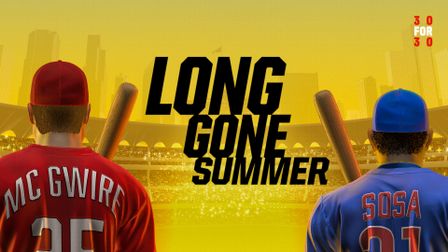
ESPN aired Long Gone Summer this past Sunday night. You would think the title was referring to the Summer of 2020, but it is a 30 for 30 on the 1998 single season home run chase between Mark McGwire and Sammy Sosa.
Maybe the producers were trying to remind the fans of what brought the fans back to baseball after the 1994 strike. Giving fans hope that something special would happen when baseball comes back, whenever that actually happens. Maybe the producers wanted to remind the world that two men, from two totally different backgrounds that have played against each other; one in red and one in blue and they still supported and liked each other. Maybe the producers know the Home Run Derby isn’t going to happen this year so they want to show over an hour of home run highlights?
What the producers missed was the point of telling this story. Most sport fans remember this battle and the historical value of breaking the 1961 record of 61 home runs by Roger Maris in a single season. Producers missed the pure talent it takes to hit a home run in the major leagues.
However, watching bomb after bomb for over an hour made it look it easy and expected. McGwire said he learned his role in baseball was to hit home runs and summed it up by saying “see ball, hit ball”. The sheer summary is a million percent inaccurate. Hitting a major league home run is arguably one of the hardest things to accomplish in all of sports. Being the strongest doesn’t mean you can hit a round ball, with a round bat, square, while moving 90+ miles per hour in different directions. It is a God given gift to go yard in major league baseball.
The producers almost completely ignored the underlying story of 1998; steroids. According to twitter comments, I was one of the few who could care less about juicing. The producers never explained why they were (or were not) taking steroids. It was mentioned briefly that McGwire used them for recovery and I have zero issues with that. The pressure to break the record and to stay healthy with the world watching would make anyone take extra vitamins. The league didn’t have any rules or protocols on regulating. MLB’s front office didn’t care about pee test because they were busy counting all the cash flowing in.
After the highlight reels of Sosa’s 66 home runs and McGwire’s 70 home runs, they show how McGwire admitted the use of PEDs and went on to coach after he retired. He was inducted into the St. Louis hall of fame and beloved by Cardinal’s fans.
Sosa was traded in 2004 after a being suspended in 2003 for using a corked bat and no one in Chicago was happy about him leaving Wrigley Field early the final game of 2004. Wrigley Field has not invited Sosa back in over a decade. (This info is only mentioned in the credits at the end.) Jim Riggleman, Cubs manager 1995-1999, said life is too short for Sosa to drift off in to memory without seeing him come back to Wrigley field.
I love the city of Chicago however, I’m confused on why the Cubs will not invite Sammy back to Wrigley Field. If Boston can forgive Bill Buckner, then Chicago can welcome back Sammy Sosa, right? According to Yahoo Sports, for the Cubs to welcome back Sosa, Sammy would have to admit he took PEDs. Basically, exactly what McGwire did. Even Cubs fans agree that Sosa should be welcomed back, except for my friends’ husband, Matt Sacco. Sacco still hates Sosa for being a bleep hole (Matt’s words, mom, not mine). But I couldn’t get a reason. Being a bleep hole can mean you have charm and Sosa was full of charisma. Was he mean to little kids? Did he not sign autographs? Bad tipper? Can someone explain how he was a bleep hole? Anyone…??
The real elephants in the documentary were Mark McGwire’s curly, red mullet while he was playing in Oakland (Woof!) and why does Sammy Sosa’s face look so much lighter? Neither were addressed.
Like the current MLB player/owner return to play negotiations, Long Gone Summer was a swing and miss for ESPN and MLB.
